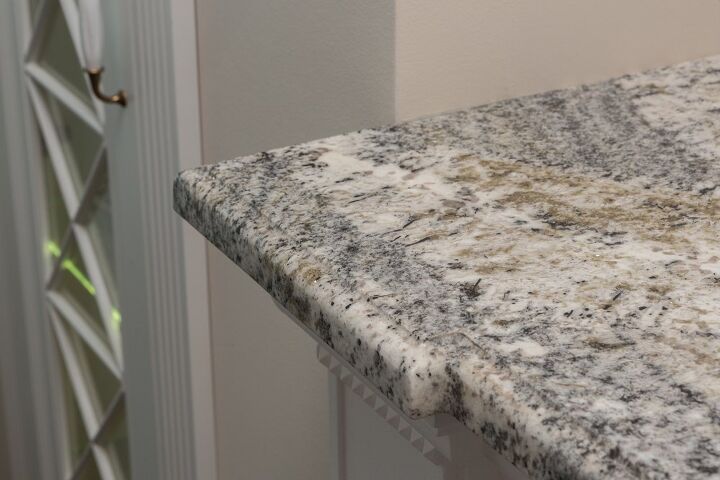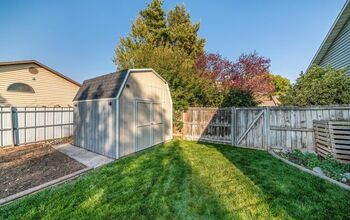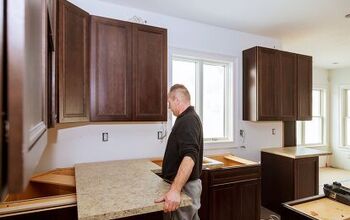What Are The Pros And Cons Of Six Different Countertop Edges?

The kitchen is often referred to as the heart of the home, and for a good reason! Most of us spend a lot of time in the kitchen cooking, laughing, and eating! So, it makes sense that we would want to have beautiful countertops!
There are many things that can affect which kind of countertop edge is going to work best for your space. If you walk into any home improvement store, you are going to see so many choices and options your head may be spinning by the end of your visit.
There are six primary countertop edge types. Each has its benefits and drawbacks. Careful consideration of each will help ensure you are happy with the final product you choose.
If you are looking for a modern countertop finish, the eased edge and chiseled edge are excellent choices to upgrade the look of your kitchen. If you’re looking for something more timeless, the bullnose edge or ogee edge will add sophistication along with simplicity. When considering your choice, it’s important to understand ease of cleaning, safety, price, and durability.
Let’s examine six different countertop edge types to understand the benefits and drawbacks of each.
Countertop Edge Pros and Cons
It’s a good idea to ask yourself a few questions before you start shopping. This will allow you to think about what your end goals are. Consider these questions:
- Style – Do you like rustic, contemporary, minimalistic, or are you going for elegant and luxurious? How is the rest of your house styled?
- Budget – One of the most significant factors in your decision could come down to budget. It’s a good idea to have a dollar figure in mind when you start shopping. Each edge type can have different associated costs.
- Safety – We don’t always think of safety when it comes to countertops. Be sure to consider the height and finished edge, especially if you have children.
1. Eased Edge Counter
It’s also known as a flat, polished edge or square edge; the eased edge is very popular because of its modern look. The simple style has a lot to offer and a few cons to consider.
Pros
- Clean design with straight lines that is ideal for modern or contemporary homes.
- Square edges that have been slightly rounded will prevent friends and family from getting scraped or scratched.
- They pair well with backsplashes and other focal points in the room. Because they are subtle, they do not take away from brighter or bolder patterns.
- Their durability is hard to beat! Because of the shape, they are less likely to become damaged, and their edges don’t flake off easily.
- Ideal for small spaces and tight corners because they don’t take up a lot of space and are easy to install.
- Great for tight budgets because they are reasonably inexpensive.
Cons
- Because of their simplicity, they aren’t fancy and may look out of place in a luxurious home.
- This edge may be considered plain or minimalistic to some people.
- The straight lines and square edges aren’t a main focal point, so they don’t draw the eyes in. You’ll need something else in the room to add some extra charm and character, such as a backsplash or appliances that stand out.
2. Beveled Counter Edge
A widely popular choice is the beveled edge countertop. They have a 45-degree slice across the top as well as a slightly rounded effect. There are many things to love about this style of countertop edge. Let’s dig in a little deeper to view the positives and negatives of this style.
Pros
- Eye-catching and is a beautiful addition to a rustic, modern, or traditional home.
- Easy to clean, and because of the shape of the edge, spills will drip onto the floor. This will save your cabinets from getting wet and becoming damaged.
- The style is very popular because it looks great in many spaces.
- While most beveled edges are 45-degree angles, you can easily customize them to add style and function.
- They are elegant and add a touch of classic beauty to any kitchen.
Cons
- Because of how popular they are, they have become a standard design and aren’t as large of an upgrade as other edges.
- Due to the angle of the edge, it’s possible to become injured by running into it. They can be especially harmful to children because of their height.
3. Bullnose Edge
Countertops with a smooth rounded edge along the top and bottom are considered to have a bullnose edge. There are many options when it comes to this style including, half bullnose, which has a round edge. There is also the demi-bullnose which has more of a flowing edge.
Pros
- Ideal for safety, and they don’t have any sharp corners to come in contact with. Great for kids!
- Durable and unlikely to chip due to the lack of angles.
- Creates a soft look that goes well in traditional, modern, or contemporary homes.
- This cut works well with various types of countertop including, granite, quartz, and stone.
- The price point is right in the middle. They aren’t the cheapest, but they aren’t the most expensive either.
Cons
- This edge style is known for appearing thinner, which isn’t always aesthetically pleasing.
- While it is an upgrade, it’s not necessarily going to stand out compared to other styles.
- Because of the smooth edge, wiping down the countertop can lead to messes on the floor. The edge doesn’t prevent crumbs and drinks from falling off the edge.
4. Ogee Edge
Known for its charming, high-class look, and Ogee edge screams luxury. They have a rounded “S” shape along the edge to soften the countertop.
Pros
- Elegant and sophisticated style that makes an impact in grand or luxurious kitchens.
- Soft edges make the ogee design reasonably safe from getting bumped and scraped.
- It’s a classic, timeless style that looks great in kitchens as well as businesses.
- There are several style variations to choose from to fit your needs. Flat, cove, and deep are just a few of the additional styles you can get with an ogee edge.
- Middle-grade pricing, so it can easily fit into your budget without overspending.
- Great choice for granite or quartz countertops.
Cons
- The decorative look can seem like it’s over the top in some spaces.
- Grooves along the countertop edge can be difficult to keep clean.
- Recommended for larger rooms because they can look and feel heavy in small, cramped spaces.
5. Chiseled Edge
With a completely unique style and unlike any of the other countertop edges, it’s a stand out option for many people. Often referred to as broken edge, the pieces are uneven and natural looking. It appears that the stone has simply been broken, but it’s actually made with a machine.
Pros
- Perfect for natural-looking kitchens due to its rustic, bold style.
- The stone naturally draws your eyes and stands out in almost any situation.
- It’s something different and unlike your regular run-of-the-mill basic countertop.
- Typically has a clear coat applied to bring out the natural shine of the stone.
- The prices vary but are typically going to fall in the middle price range. This style is great for upgrading your room without spending loads of money.
Cons
- The rough edges can cause scratches and abrasions if someone runs into it.
- Cleaning big messes can be a challenge to get into each of the cracks properly.
- May not pair nicely in every style of kitchen because it’s more of a natural, rustic look.
6. Waterfall Countertop Edge
Elaborate and sure to make a huge impact on your kitchen, the waterfall edge is a fantastic option. It’s design is unique, stunning, and stands out. The waterfall edge takes the counter down the side of the cabinet towards the floor to create a waterfall effect.
Pros
- Made with great detail, it’s a focal point of your kitchen.
- The distinct features will look best in large, open kitchens instead of small cramped spaces.
- The edge appears thicker than many other options, which adds a more stimulating look.
- Perfect for contemporary-styled homes.
- Can be made with a variety of countertop materials including granite, black tourmaline stone, and black opal.
- It’s easy to clean and there isn’t much maintenance involved other than keeping it clean.
Cons
- High-end product that can be rather costly.
- Not a good choice for small kitchens because of its bulk.
- The installation process is much more tedious. The style requires two pieces of stone to be precisely mitered to fit perfectly.
Related Guide: Are Waterfall Countertops Out Of Style?
Choosing the Right Countertop Edge Type
Ultimately there are many different options for countertop edges and no edge fits all preferences. Weighing the pros and cons of each style will help you decide which option is best for you. If possible, stop into your local home improvement store so you can see and hold samples to get a real feel for each option. Don’t forget to get price estimates because the financial impact can affect your decision. Now the hard part is up to you to decide which countertop edge is the right one to go with!
Related Guide

Paige is an elementary school librarian with a passion for writing. Her hobbies include reading an exorbitant amount of fantasy, slowly teaching herself to draw, and home decor. While she isn't the most talented artist or interior designer, what she lacks in skill she more than makes up for in enthusiasm. When she's not curled up with a book, you can certainly find her curled over the keyboard.
More by Paige Hanawalt













![The 10 Best Table Saws - [2022 Reviews & Buyer's Guide]](https://cdn-fastly.upgradedhome.com/media/2023/07/31/9070645/the-10-best-table-saws-2022-reviews-buyer-s-guide.jpg?size=350x220)













